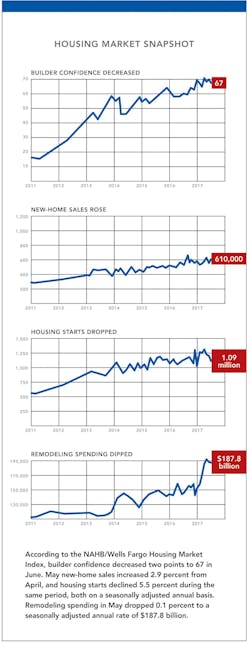In their first year of ownership, new-home buyers spend about $10,600 on appliances, furnishings, and home improvement projects—2.6 times more than other homeowners in a typical year, according to a new analysis of consumer spending from the National Association of Home Builders (NAHB).
The analysis by NAHB economist Natalia Siniavskaia examines data from the U.S. Bureau of Labor Statistics’ Consumer Expenditure Survey to quantify household spending on items such as sofas, bedroom sets, refrigerators, and property repairs.
During the first two years after closing on the house, a typical buyer of a newly built single-family home tends to spend, on average, $4,500 more than a similar nonmoving homeowner.
“While construction jobs are the most obvious impact of new homes on the economy, it’s important to realize that it doesn’t stop there,” said NAHB Chairman Granger MacDonald, a home builder and developer in Kerrville, Texas. “It’s the architects, the heating technicians, the lumber dealers. And it’s the mom-and-pop owners at the local furniture or appliance store who are helping these buyers make their house a home.”
Looking at spending patterns of new-home buyers and identical households that do not move, the differences are largest on furnishings. A typical buyer who purchases a newly built home spends an estimated $2,500 more on furnishings than an identical household that remains in a house it already owns.
The typical buyer purchasing a newly built home also spends an estimated $1,250 more on appliances during the first year compared with a nonmoving owner. The differences for property repairs and alterations are smallest at $714.
The analysis further shows that the higher level of spending on furnishings, appliances, and property alterations is not funded by cutting spending on other items, such as entertainment, transportation, travel, and restaurant meals.
In the aggregate, most of the demand for appliances, furnishings, and remodeling projects in a given year is generated by nonmoving homeowners because they outnumber homebuyers by a wide margin.
But new owners’ impact is noticeable—and vital, MacDonald said. “The health of housing—and new-home buying—is key to the overall state of our economy.”
(Click charts to enlarge)

